There is a lot of “rocket science” involved in the design and engineering of the world’s smallest and lightest land seismic nodes, as well as their associated charging/harvesting equipment. However, it is not difficult to understand that you need to be able to retrieve, clean, harvest, recharge and redeploy a high volume of nodes in a short amount of time for seismic programs to be truly efficient and cost-effective, without compromising image uplift.
This is critical for all survey types and sizes, ranging from small-scale urban deployments to large, simultaneous sweep acquisition operations.
To ensure that our clients fully benefit from our low-cost land seismic nodes, we have developed 3 separate node handling systems (Nimble™, Compact™, and Pro™) which have scalable charging and harvesting units (Nests), enabling efficiency for all survey sizes and types.
In this article, we will focus on our Pro System™ and discuss how the STRYDE Node™ management technology simplifies large-scale field operations and cover exactly how this is done through the retrieval, cleaning, harvesting, charging, and preparation of nodes for redeployment.
A multi-container system for cycling nodes in the most efficient way possible…
The STRYDE Pro System™ (see figure 1) is a 3-container solution designed specifically to efficiently manage, charge, harvest data, and clean up to 1 million Nodes in the field. This system has the capacity to charge and harvest up to 20,000 Nodes per day, allowing dense and large-scale surveys to be delivered faster than ever before.
The containers are modified 20 ft shipping containers that are brought onsite by truck and unloaded using a small crane.
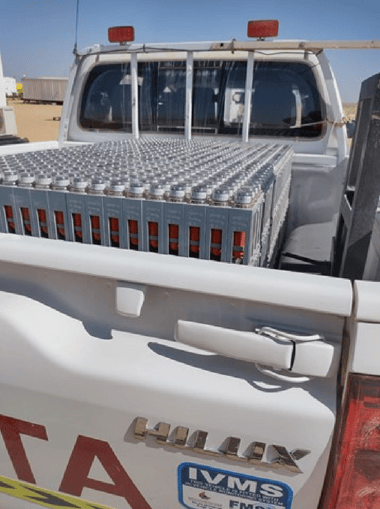
.png?width=649&height=216&name=Untitled%20design%20(69).png)
Figure 1 – STRYDE Pro system containers
Like all STRYDE’s systems, the Pro System™ is scalable and depending on the amount of STRYDE Nodes™ purchased or leased, can be deployed in up to a 3-container configuration with 2 containers designed solely for node charging and data download.
Cleaning the nodes
Let us start with the most mundane of chores, cleaning. After the nodes are retrieved from the field, they need to be washed to remove any dirt or other material that may be stuck to them. The cleaning is done in a purpose-built container.
The cleaning operation ensures an optimum life span of the equipment, and that the node’s optical data link is not obstructed by mud, dirt, or sand, and is ready for efficient wireless data offload. The trays of STRYDE Nodes™ are loaded into the washer unit (which resembles an industrial dishwasher) where they are sprayed with high-pressure water jets. After the washing cycle, which lasts 3 minutes (for 540 nodes), nodes are blown dry using an air gun as shown in Figure 2.

Figure 2: Drying nodes after the washing cycle
A lifting device is used to unload trays from the washer onto the roller conveyor, where they can be moved through to the charging container via an adjoining door, as shown in figure 3. Note that no manual lifting or carrying of node trays is required throughout this entire process.
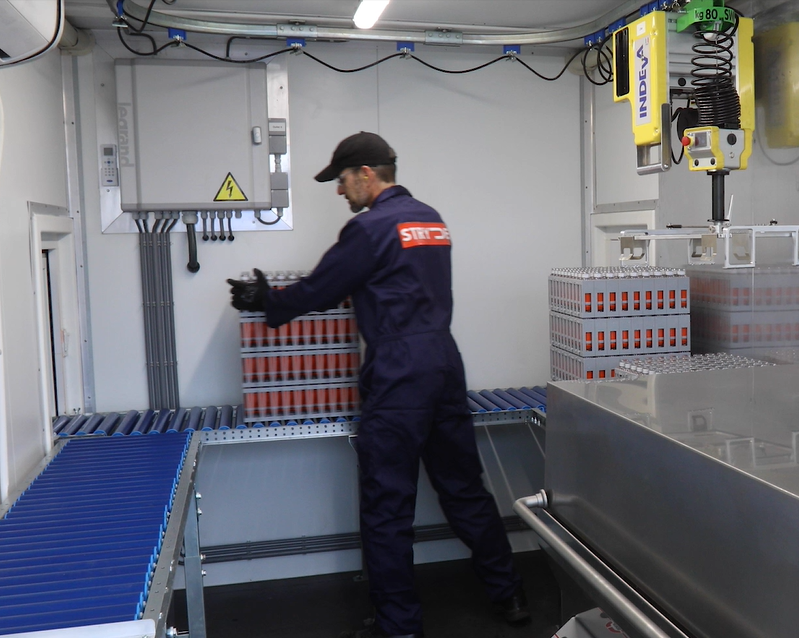
Figure 3 – Passing the cleaned nodes to the next container for testing, charging, and downloading
Testing the nodes
In the adjoining container, STRYDE Nodes™ can be cycled through a testing unit that shakes the nodes in a predetermined pattern to ensure and verify the fidelity of the node’s sensor response. By comparing the data recorded by each node during the test with the actual motion of the shaker table, defective nodes can be identified and removed from circulation. This check is performed automatically during the next step of the node cycling process – data harvesting – without the need for any human intervention.
Figure 4 shows a tray of nodes being loaded into the testing unit using the lifting device. These lifting devices are fitted in the cleaning and charging/harvesting containers to eliminate the need for manual lifting and carrying of node trays. This helps ensure the safe and ergonomic operation of the system even when thousands of nodes are cycled through the container each day.

Figure 4: Loading a tray of nodes into the “shaker” testing unit
This testing process takes about 5 minutes per tray of nodes. It is common to test the nodes periodically but not necessarily every time they are cycled through the charging and harvesting container.
Recharging and harvesting data from the nodes
After the test process is complete, the node trays are loaded into the charging and harvesting racks. Figure 5 shows a node tray being loaded into an empty shelf in the charging and harvesting rack.
Recharging and data harvesting takes place simultaneously and is the most time-consuming step of the node cycling process. This step can take up to 4 hours for nodes that are fully battery depleted and have been recording continuously for 28 days. If the nodes have not been deployed for that length of time, the recharge and harvesting duration is reduced. Charging and harvesting progress can be monitored easily by the operator using the touchscreen PCs fitted above each rack.
Now that the nodes are fully charged and the data has been harvested, their test records are automatically analyzed to determine the health of the nodes before they are re-deployed. Any defective nodes are clearly flagged by the system so they can be cherry-picked out of the trays for further troubleshooting, and the rest of the nodes can be returned to the line.
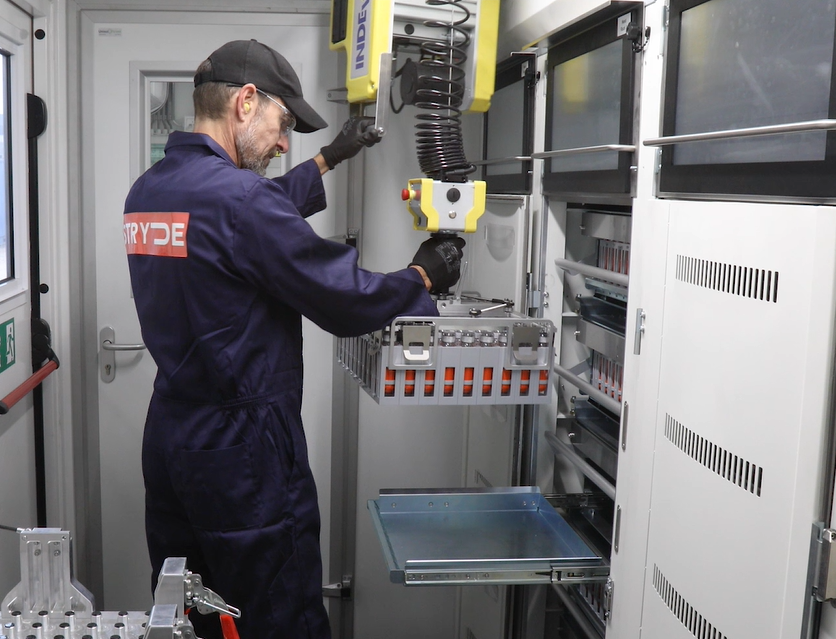
Figure 5: A tray of 90 nodes being loaded into an empty shelf in the charging and harvesting rack
There are multiple recharging and harvesting racks in the container so that multiple trays of nodes can be processed simultaneously. Figure 6 shows several trays of nodes in the charging racks and another shelf being unloaded after nodes have been fully charged and the data has been offloaded.
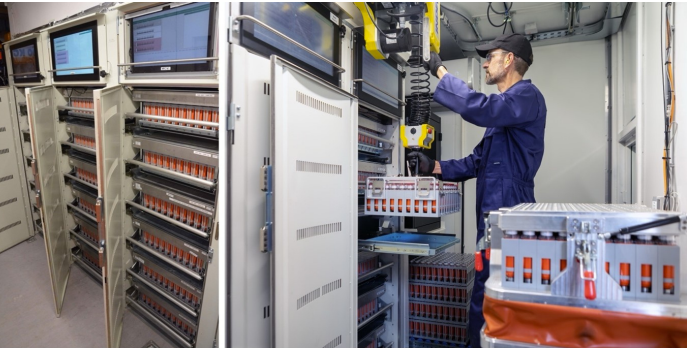
Figure 6: Multiple node trays in the recharging rack (left) and unloading after charging and download is complete (right)
After the charging and harvesting is complete, the trays of nodes are removed from the racks, stacked, and removed from the container. Depending on the container configuration, node trays may be pushed along a roller bench to exit the container or stacked by the end doors of the container for easy load out by field crews. Deployment vehicles can then be loaded, and nodes sent back to the line for re-deployment. Figure 7 shows “fresh” nodes after their journey through the system containers, ready to be returned to the line.
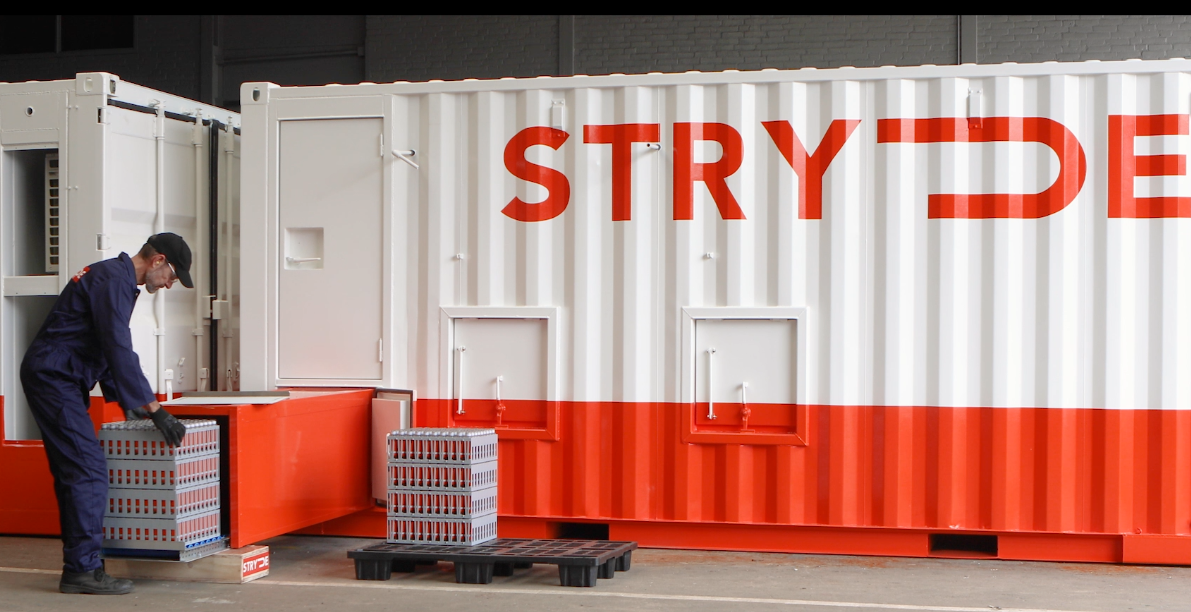
Figure 7: Nodes ready for redeployment
Alternative solutions for smaller-scale surveys
Different-sized surveys will have different redeployment requirements. Smaller surveys may not need a container system at all, or all the charging, harvesting, and recording system equipment may fit into a single container. Shown below in Table 1 is a comparison of some statistics for each type of operation.
|
Nimble System™ |
Compact System™ |
|
|
Recommended maximum number of nodes |
30,000 |
150,000 |
|
Maximum number of nests (90 nodes per nest) |
6 (1 Rack) |
24 (4 Racks) |
|
Daily rotation rates per Nest: 28 to 14 day deployments (4 hour and 2 hour charging time) |
540 to 1,080 6 x 4 hour cycles per day 90 nodes per nest |
540 to 1,080 |
|
Total Maximum System rotation rate capacity: 28 to 14 day deployments |
3,240-6,480 540 per nest * 6 nests |
12,960-25,920 540 per nest * 24 nests |
|
Automated Node Cleaning |
No |
Optional |
|
Mobility |
Portable |
One 20 ft container |
|
Standard Data Output |
||
|
Seismic data format |
SEGD Rev 3 |
SEGD Rev 3 |
Table 1: Comparison of node cycling rates and STRYDE system sizes
Summary
At STRYDE, we know that to be truly efficient and cost-effective, the total cost per channel must include:
- The node cost as well as the node charging and harvesting system cost
- Time savings gained through efficient node management operations
- Cost savings associated with requiring less crew
We meticulously designed each system with these criteria at the forefront of our decision-making process and we are pleased to see how our technology continues to unlock unrivalled efficiency and cost savings for our clients, ranging from surveys managing just a couple of hundred STRYDE Nodes™, up to 166,000 nodes.



